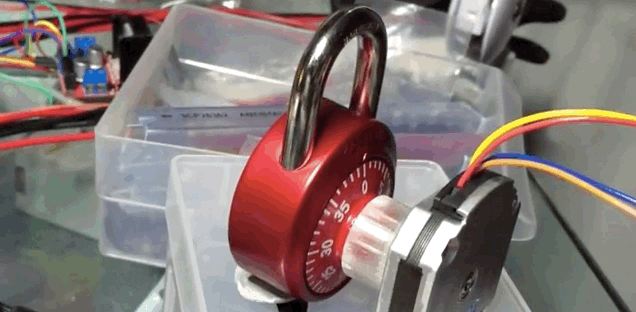
Those combination locks you pick up for a few bucks at the office supply store have never been the epitome of security — but in recent weeks, they’ve taken a beating. A few weeks ago, Samy Kamkar — the endlessly clever gent behind the USB necklace that’ll hack your computer and the self-title Samy virus that devastated MySpace back in the day — demonstrated a way to crack a Master Lock by hand in just a few minutes. Now he’s back with a robot that does all the hard work for you:
(If you just want to see the lock get owned in a heartbeat, skip to 0:25 or so in the video above)
Effectively an automated version of the manual process he detailed weeks ago, Samy’s Combo Breaker is a witch’s brew of geeky goodness: a stepper motor to spin the dial, a servo motor to tug the lock to see if it’s open yet, a 3D printed harness to hold everything in place, and an Arduino to handle all the math and tell the motors what they should be doing.
So is it time to throw out all of your combination locks? To be honest, probably not — at least, not if you weren’t looking to ditch them already. As noted right off the bat, these combination locks have never been all that great; they’re enough to keep casual lookie-loos from poking through your locker or desk drawer, but they’re effectively tissue paper to anyone who knows what they’re doing and/or owns a big hammer.
If you’re using one of these spinners to keep someone looking to borrow a pen from accidentally opening the drawer with all of your Harry Potter fanfic, whatever; if you’re using it to protect trade secrets and launch codes, though, you… probably want to reconsider your security options.
Comments
Post a Comment